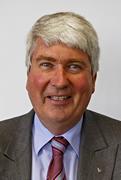It started as the worst nightmare, “Oh, no! The public address system isn’t working!”
I was at the podium to lead the Ceremony of Remembrance at the Cenotaph on the Domain in Hobart. Thousands of people had followed the marchers and now crowded the Cenotaph area. We had watched respectfully as wreaths were placed. I then stepped onto the podium to lead the Ceremony of Remembrance. To my horror the public address system failed to operate. Still, the combined choir from Collegiate and Hutchins Schools, with the Salvation Army Band, knew the drill and, being close enough to hear my unamplified voice, they led us in singing the opening hymn.
At this point I was ‘alert but not afraid’. The technicians would get the system sorted out during the singing of the hymn.
As the hymn concluded I spoke loudly into the microphones. The result? People in the crowd cupping their hands behind their ears signaling that I was mute. The PA system still was not working! I was now alert and afraid!
I commented, more or less to myself as the PA system was down (I later discovered the ABC broadcast all my comments as their microphone was working: be alert and very afraid!), that it was not possible to continue because we had the Governor of Tasmania’s Address and the Ode to follow. I therefore asked people to be seated for five minutes to give us time to fix the problem. There were enough people in the official party who could hear me and so they sat down. It was obvious that now we were alert and at work!
After a brief time the technician declared the microphones null and void, but he enabled us to proceed with the use of a hand held microphone.
The Ceremony lived out the true spirit of ANZAC: the crowd took the delay in their stride, the speakers joked as they passed ‘the baton’ (microphone) from one speaker to the next, we were blessed by the Governor’s excellent address, the Ode was profoundly moving, the prayers and singing fitting.
We had worked together to save the day, to take us somewhere beyond ourselves in a spirit of co-operation, of mateship: we lived the ANZAC spirit.
At a personal level, it was to get even better for me. A leading RSL official approached me following the conclusion of the Ceremony, shook my hand and looking me squarely in the eye said, “John, you did bloody well. You did bloody well. Thanks mate.”
It doesn’t get better than that!
My ANZAC Day involved a nightmare – but ended in a dream.

 Father Frank Brennan AO is a committed advocate for human rights, having worked tirelessly for others for over 30 years.
Father Frank Brennan AO is a committed advocate for human rights, having worked tirelessly for others for over 30 years.